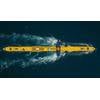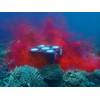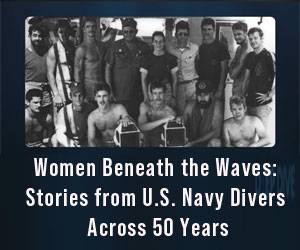Gender-Sensitive Approach Needed in Marine Spatial Planning
When considering how to use marine spaces and allocate resources to their management, policymakers would do well to take a gender-sensitive approach, according to UC Santa Barbara researchers and their collaborators in a study published in the journal Marine Policy.
According to their findings, globally, men and women tend to use the ocean in different ways, with implications for how marine spaces are used and valued.
“Obviously, gender can come into any facet of life, but marine spatial planning is not often looked at through that lens,” said Abigail Vath Meyer, a geospatial developer and lead author of the study.
While collecting ocean use data as part of efforts to conduct marine spatial planning around the world, Meyer and fellow researchers noted patterns in ocean area use by gender — patterns that were relevant to equitable marine planning and governance. They note their findings across three case studies in the Maldives, the Azores and Belize. The data was gathered using the marine spatial planning application SeaSketch, developed in the McClintock Lab.
“We found women on average were using the ocean closer to shore than men,” Meyer said.
Generally, women in the countries studied had less formal participation in the fishing economy or other maritime industries, which was dominated by their male counterparts. They were far more active in indirect ways, such as gear prep and catch processing, as well as in less formal subsistence, artisanal and recreational fishing.
As a result, in selecting the zones they value, women tended to place the most value on areas that were onshore or just offshore, and not just for fishing — some of these areas are also valued culturally as community spaces and as safe zones for their children. Because informal uses are harder to capture than more official and commercial uses that come with documentation, women’s ocean uses tend to be invisible and therefore undervalued.
A marine area that users value for noneconomic benefits, such as culture and community, could be more easily compatible with a marine protected area designation, whereas an area that is heavily commercially used would lead to a more difficult conversation about marine protection in that area.
In the three countries studied, men dominate the data — they are the most intense and the most represented users of the ocean. However, this new focus on gender equitable marine spatial planning has led at least one country — Belize — to take a second look at their ocean use data.
“After this research was done, they ended up conducting a second round of ocean use surveys,” Meyer said. “One of the things they were striving for was more female representation in the survey.”
Another finding Meyer and team saw was that female recreational fishers around Santa Maria Island in the Azores tended to demonstrate more awareness of, and compliance with marine protected areas than their male counterparts.
“That’s incredibly useful in terms of being able to engage more with those fishers, to increase compliance or build a partnership there around the existing marine protected area network,” Meyer said.
Specific gender roles are highly variable between regions throughout the globe and intersect with marital status, wealth and nationality, so ocean use surveys in marine spatial planning should avoid a “gender-blind” approach, say the researchers.













 August 2025
August 2025



